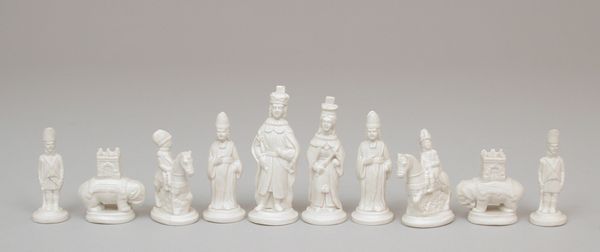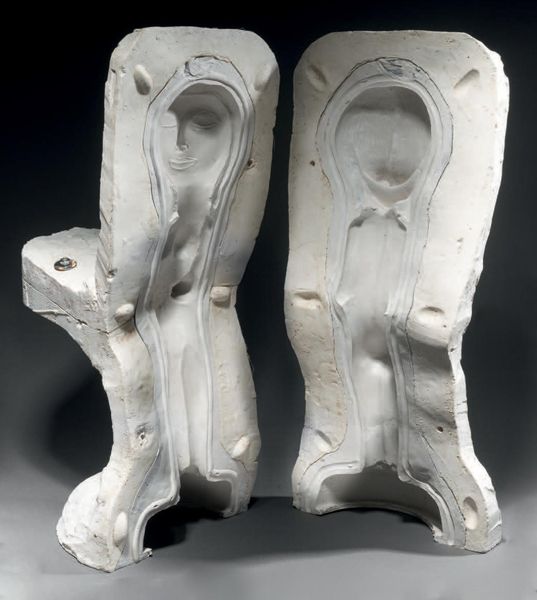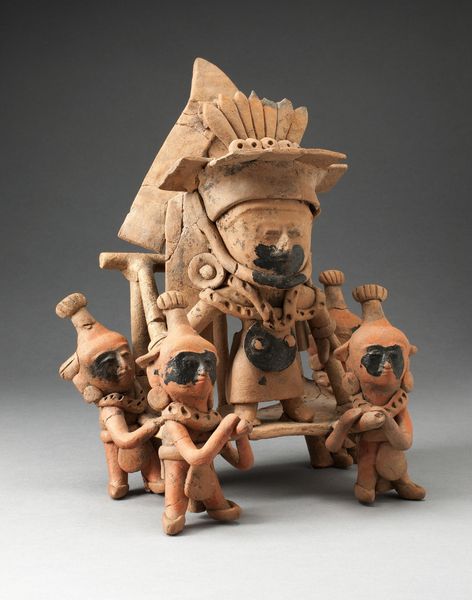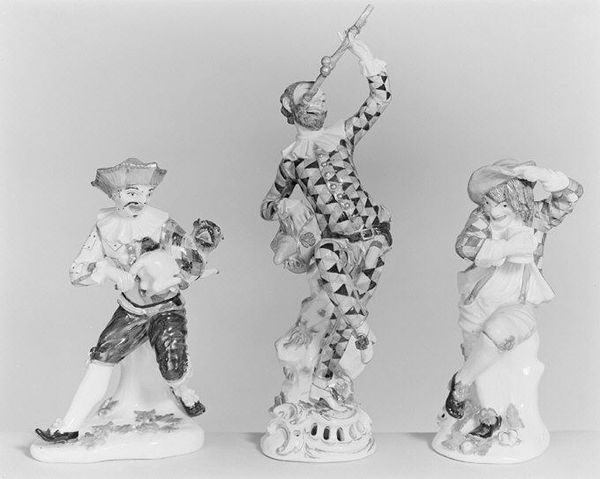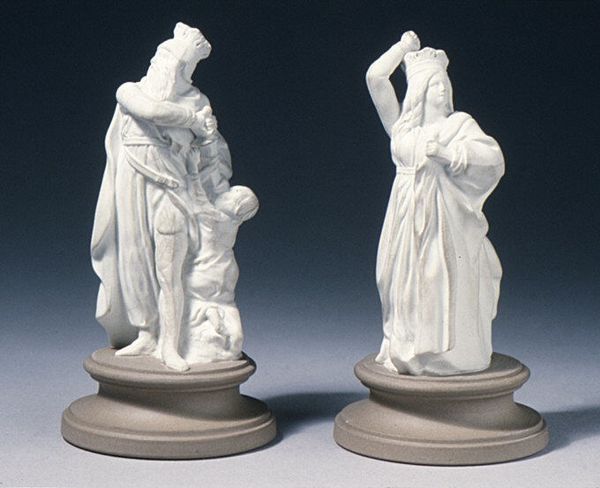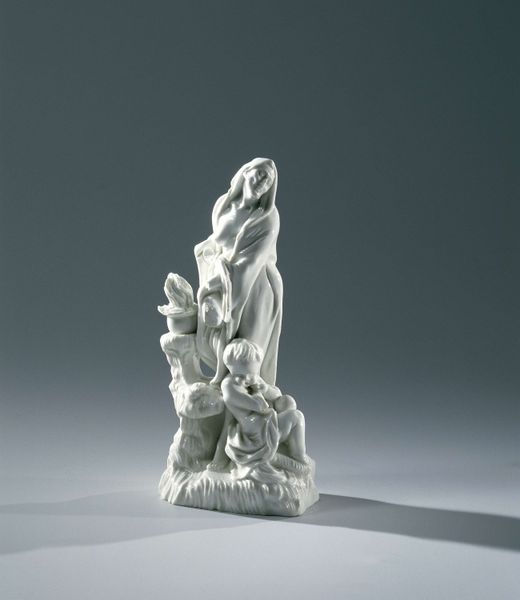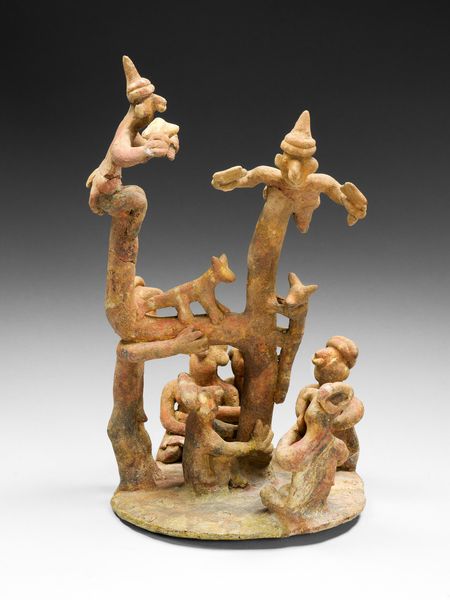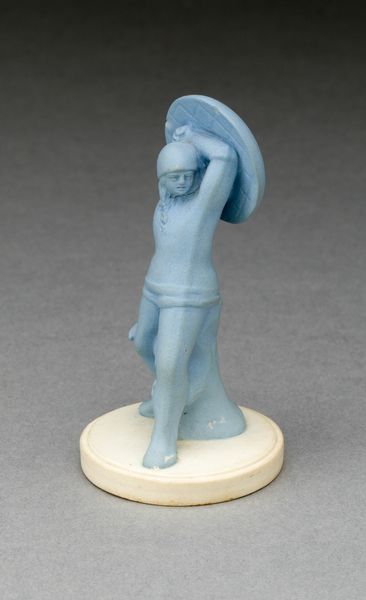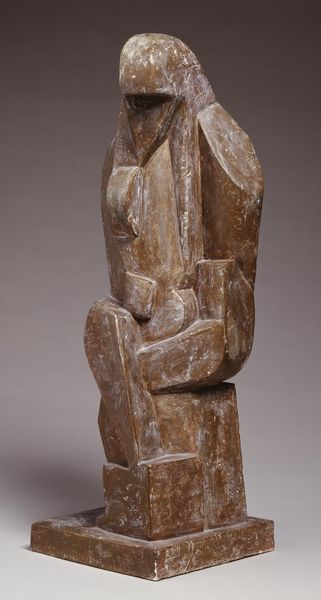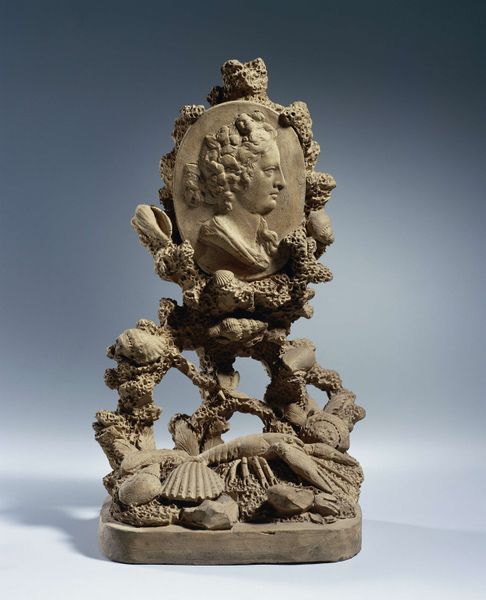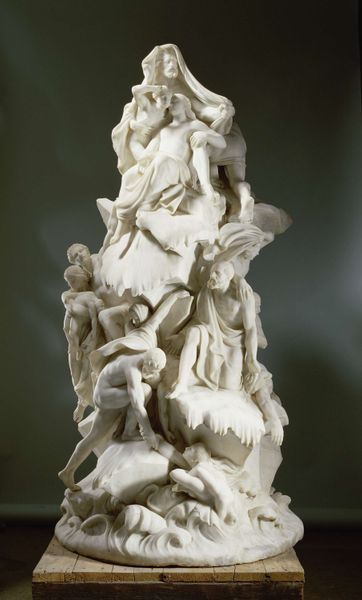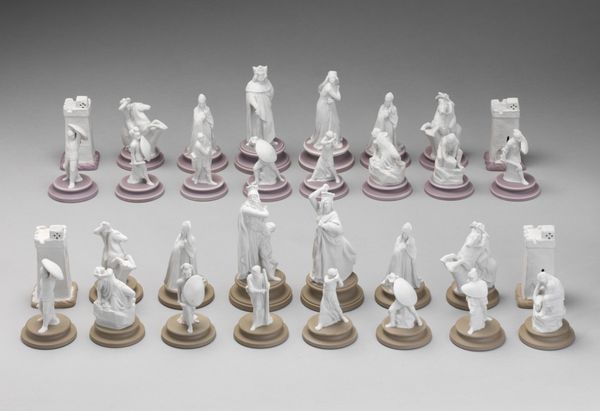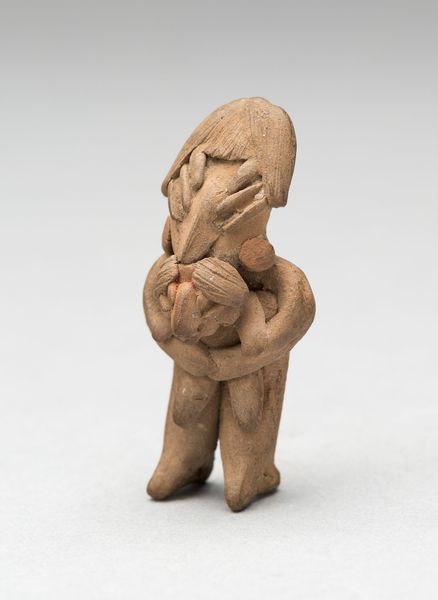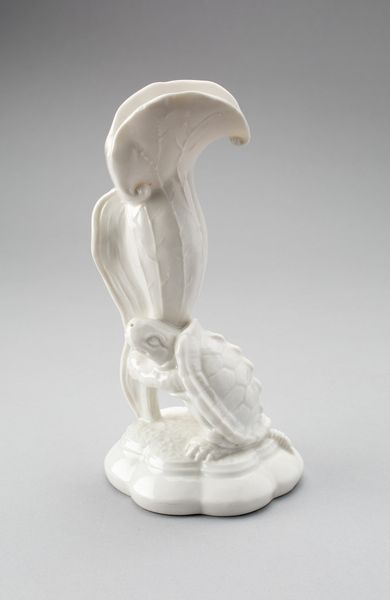
sculpture, plaster
#
sculpture
#
figuration
#
sculpture
#
plaster
Copyright: Anton Prinner,Fair Use
Curator: Well, if that doesn’t look like a battle of gods, I don’t know what does. The stark, white figures give off this aura of solemn, almost ancient conflict. Editor: That's an interesting observation. What we’re looking at is a Chess Set by Anton Prinner, crafted in 1950 from plaster. At first glance, the simplified, figurative forms exude a primal power, yet… it almost feels archaeological. Curator: Exactly! There's something incredibly archetypal about them, almost like they're these simplified gods and goddesses ready to throw down. Do you think the stark plaster adds to that primitive sensation? It almost seems fitting somehow, like they’ve risen straight out of some ancient earthwork. Editor: Definitely. Plaster, as a material, brings to mind themes of fragility and temporality; it is also historically bound to the act of preserving objects through the process of molding and casting. By framing this battle in such a delicate medium, it speaks to the very ephemeral nature of power, conquest, and even existence. I also wonder if Prinner was attempting to comment on the arbitrary rules that govern our actions… I can imagine this game taking place on a global scale, with life and death consequences. Curator: Oh, the existential chess match! Yes, I'm picking up on that too; and it all translates, of course, into the artistic statement on humankind. Also, these are very slender figures. All these figures seem like totems that somehow came alive in our age, almost to remind us that we carry inside an archaic part, that continues playing its games inside of our heads... The way these "primitive" features merge with modernity strikes me as something incredibly poetic. Editor: And there's such a stillness in their forms, isn't there? It feels as though each piece embodies a kind of potential violence, poised to act at any moment. But they are made out of plaster, as we mentioned, as if holding an imminent catastrophe inside. A potent statement about strategy and conflict, embedded within seemingly harmless entertainment! Curator: It surely does. I find that its aesthetic force leaves the viewers craving to unveil our primordial side, that continues governing our thoughts today... A true reflection about human condition indeed! Editor: Well, there’s a potent synthesis of aesthetic beauty and insightful social critique, a reminder that art's transformative power always exists as an expression of human history.
Comments
No comments
Be the first to comment and join the conversation on the ultimate creative platform.
